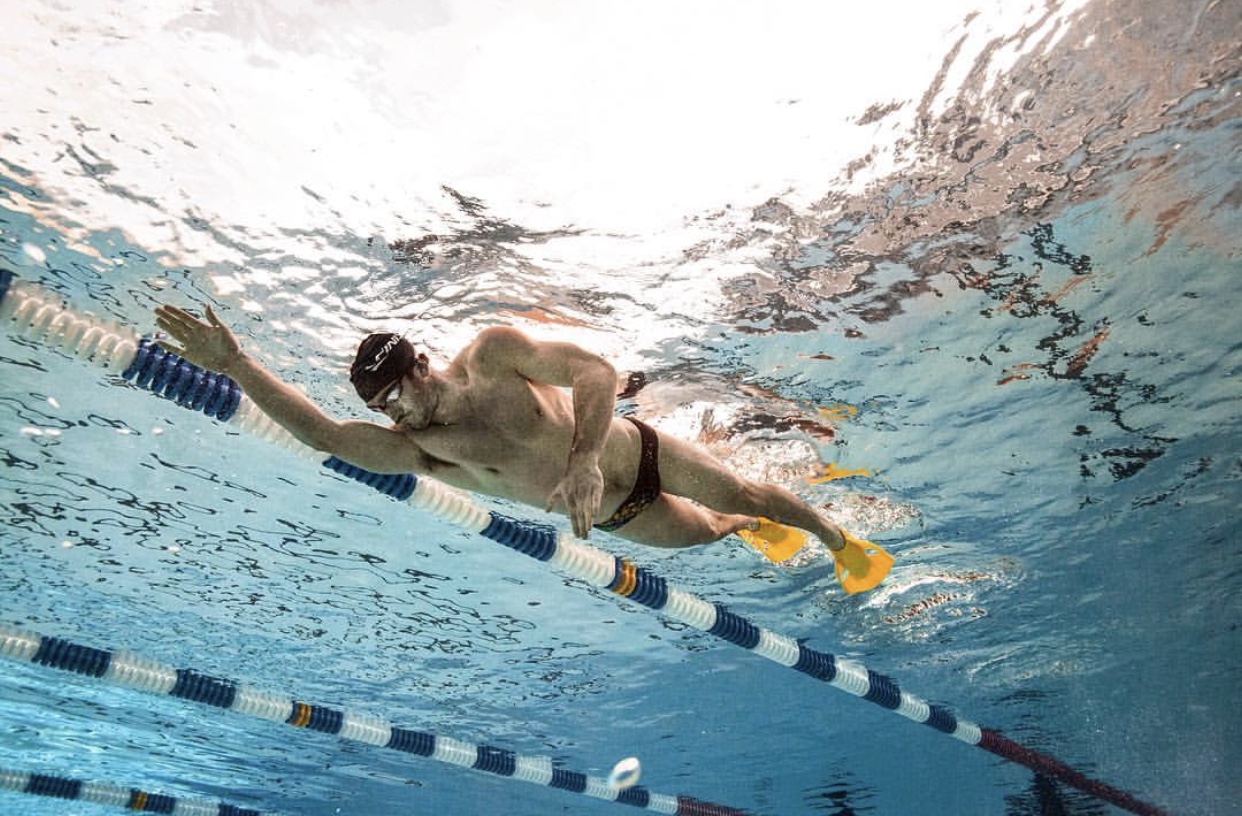The Difference Between Short Swim Fins And Long Swim Fins

Going faster is every swimmer’s end goal. It’s what you work for day in and day out. Aside from all the drills, intervals and dryland training, swim equipment and training accessories can also add a big boost to your workouts. Swim fins, in particular, are known for propelling you through the water and adding speed to your workout. They’re great for adding increasing overall strength and endurance without causing any extra strain on the upper body.
With fins, there are a plethora of styles of swim fins, each of which serve their own unique purpose. The most common styles being short swim fins and long swim fins.
You’ve likely seen both short blade and long blade fins around your local pool deck, but what’s the difference between the two? We hope to examine that here with a quick overview on long and short swim fins to help you understand.
Long Swim Fins
The Fit & Design
Long blade swim fins resemble your typical snorkeling fin. They are made with a longer, more flexible heel and blade, and a flat edge to help create more water resistance, and a longer, wider kick. The longer blade will likely become more flexible and stretched out over time, which decreases its efficiency and longevity.
The Pros & Cons
Pros: The longer fin design creates more resistance and flexibility in your kick, while covering more surface area in the water, which ultimately helps activate your muscles, elevate your legs and hips and propels you along quicker.
Cons: Due to the longer blade, you have less range of motion than you would in a shorter fin. Because of this, you’re less likely to replicate your natural, short and quick kicking style.
Summary
The long blade swim fins are a great option for beginner and intermediate level swimmers who are looking for easy speed, comfort and flexibility in the kick.
Short Swim Fins
The Fit & Design
Short blade swim fins are significantly shorter than your long blade fins, and generally only extend an extra couple inches off the tip of your toe. Short swim fins offer a wider range of styles, including both angled and flat edges, designed specifically to target different muscle groups and strokes. Because of the short design, short blade fins tend to be stiffer and less flexible on your foot. Short swim fins will generally have a longer lifespan than longer fins, as they are not as likely to stretch out.
The Pros & Cons
Pros: Due to the orientation of the fins, short blade fins make it easier to keep up a quick tempo at a higher kick rate, with ideal propulsion through the water. This not only helps with correcting technique, and mimicking a natural race speed, but it builds true, stroke-specific strength in the leg muscles.
Cons: Because you are kicking at a higher rate and faster tempo, the shorter blade fins engage and burn your muscles quicker, which requires more effort to complete the set on pace.
Summary
Most swim coaches prefer short fins to long fins because of the similarity in kick pattern to your natural finless swim. With its quick nature, You are essentially getting double the benefits with a short fin than you would with a longer blade. That being said, short blade fins are more suitable for more experienced swimmers, who are in the thick of training.
Shop All Training Swim Fins
